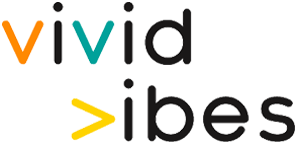#Article
Learning the Basics: Understanding Business Design
By: Dimitris Semsis
With Manolis Papadakis
From the words “Business Design” alone, it is not hard for the uninitiated to imagine an endless expanse of graphs, excel sheets, and numbers — things that would put to sleep even the most resilient of people. This is far from the truth though, as business design has proven to be one of the most interesting and effective tools for navigating the tumultuous world of business today.
Let us start with the basics, though: What is business design, and where did it come from?
The term came to be in the mind of John Arnold, a phycologist-engineer from Stanford University, during the 1950s. It was then heavily enhanced by Roger Martin, in 2009, at the Rotman School of Management. Since then, it has become a staple for the implementation of sustained corporate innovation and frequently acts as the academic basis for the incorporation of innovation into the world of business-leadership.
Today, this process has evolved into the combination of design (market desirability), business (sustainability), and technology (feasibility)—with the use of all three leading to innovation. Such innovation can lead to ideas that are filled with creativity, long-term feasibility, realistic sustainability and potential for growth, and—most importantly—financial success.

When such a way-of-thinking is incorporated into the thought processes of a business-leader, great things are bound to happen. Business Designs allows leaders to view business through a lens that is centred around empathy and creativity; this leads to the use of imaginative problem-solving, and the realization and implementation of amazing—but complex—ideas. This increases the value of any business venture, subsequently increasing the potential for impact and profitability.
Generally speaking, a Business Design process includes the following steps:
1- Market Research: Analyse your competition, industry best-practises, and products and companies that have proven successful within your field. By doing this, you can collect data that will allow you to form calculated conclusions and move confidently forward (we use sites such as thinkwithgoogle, medium, and google scholar for our research).
2- Make a Plan: Create your plan; organize your thoughts and conclusions in a neat and logical manner. Plans can often highlight hidden pain-points and lead to new growth pathways. Depending on the results of your plan, proceed accordingly.
3- Testing: Test your final product repeatedly; learn from your results and make the necessary adjustments. You might often have to revise, but this is the price of perfection.
There are many examples of successful cases of Business Design. From the iconic Swiss army-knife—a testament to practicality, simplicity, and timeless design—to Google’s own homepage, which stands as a shining example of seamless customer experience and ingenuity. There are also more localized cases (in this case related to Greece), starting with efood’s (an online food delivery platform) incorporation of supermarkets into its catalogue during Covid-19, to Voltaren’s (an ointment used to alleviate muscle pain) new design with include a nozzle than doubles as a localized massage tool—in both cases we see creativity and customer-centricity as the driving factors.
Sadly. there have been many cases where great ideas were left unfinished due to a practical problem, and where progress was halted due to a lack of creative thinking. Business Design is here to bridge the gap and create newfound value within the world of business.
In the not so distant future, we will analyse the main disciplines within Business Design, along with ways of implementing such principles into your business on a practical level—stay tuned!
